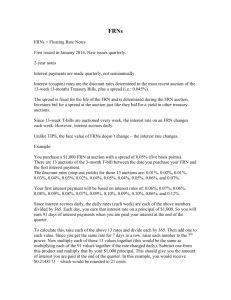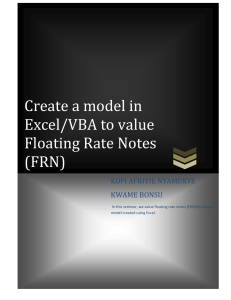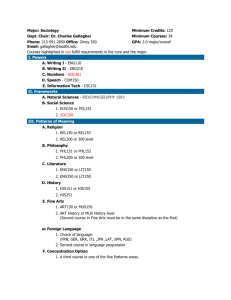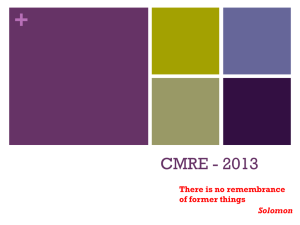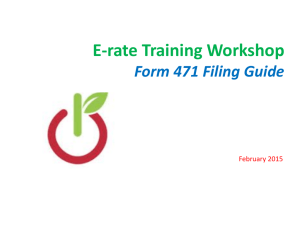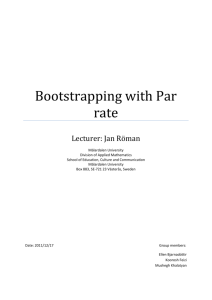Create a model in Excel/VBA to value Floating Rate Notes (FRN)
advertisement
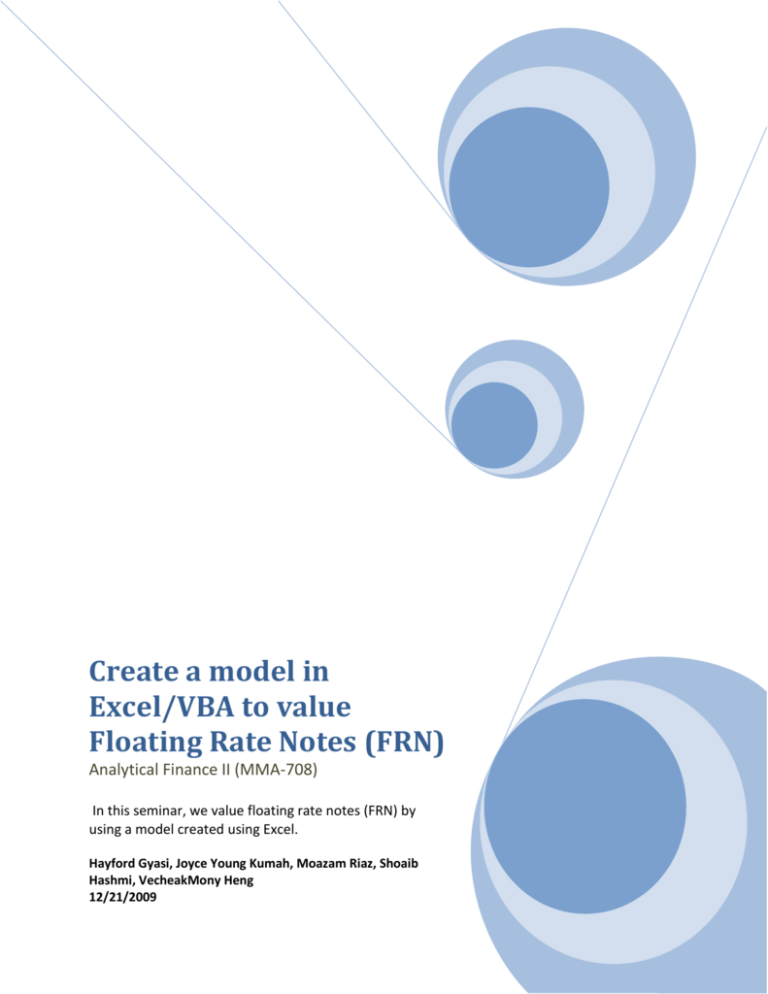
Create a model in Excel/VBA to value Floating Rate Notes (FRN) Analytical Finance II (MMA-708) In this seminar, we value floating rate notes (FRN) by using a model created using Excel. Hayford Gyasi, Joyce Young Kumah, Moazam Riaz, Shoaib Hashmi, VecheakMony Heng 12/21/2009 TABLE OF CONTENT TABLE OF CONTENT ...................................................................................................................................................... 2 VALUING FLOATING RATE NOTE (FRN) ......................................................................................................................... 3 Issuers .......................................................................................................................................................................... 3 Variations..................................................................................................................................................................... 3 Risk .............................................................................................................................................................................. 4 Trading ......................................................................................................................................................................... 4 Example ........................................................................................................................................................................... 4 Simple Margin .............................................................................................................................................................. 5 METHODOLOGY ........................................................................................................................................................... 5 CALCULATION & RESULTS............................................................................................................................................. 6 CONCLUSION ................................................................................................................................................................ 7 REFERENCES ................................................................................................................................................................. 8 2 VALUING FLOATING RATE NOTE (FRN) INTRODUCTION A floating rate note (FRN) is a debt instrument that pays a floating interest rate that is usually based on an accepted market benchmark rate such as the Libor. It maturity ranges from 3 to 5 years. FRN provide holders with protection against rises in interest rates, but pay lower yield s than fixed rate notes of the same maturity. FRNs provide holders with additional interest if the appreciable interest rate rises and less interest if the rate falls. Investors therefore buy floating rate notes when it appears that interest rate will rise. FRNs are issued by corporations wishing to raise funds for capital market. It is also used sometimes to balance risks incurred through other interest rate instruments in an investment portfolio. They are sensitive to interest rate changes as the coupon moves in step with the changes for better or for worse. An FRN is a hybrid between a debt capital market and a money market security: - - It original maturity typically exceeds 12 months (most FRNs have longer maturities than straight corporate bonds), and its price is quoted as a percentage of face value, like a bond. Its coupon rate is reset at each coupon date in line with a money market reference rate such as LIBOR or federal fund rate, plus a fixed spread. The spread is a rate or percentage point example 0.2 that remains constant. Almost all FRNs have quarterly coupons, i.e., they pay out interest every 3 months. At the beginning of each period, the coupon is calculated by taking the fixing of the reference rate for that day and adding the spread. A typical coupon would look like 3-month US LIBOR + 0.20%. Issuers In the U.S., government sponsored enterprises (GSEs) such as the Federal Home Loan Banks, the Federal National Mortgage Association (Fannie Mae) and the Federal Home Loan Mortgage Corporation (Freddie Mac) are important issuers. In Europe the main issuers are banks. Variations Some FRNs have special features such as maximum or minimum coupons, called capped FRNs and floored FRNs. Those with both minimum and maximum coupons are called collared FRNs. 3 Perpetual FRNs are another form of FRNs that are also called irredeemable or unrated FRNs and are very similar to a form of capital. FRNs can also be obtained synthetically by the combination of a fixed rate bond and an interest rate swap. This combination is known as an Asset Swap. Perpetual Notes (PRN) Variable Rate Notes (VRN) Structured FRN Reverse FRN Capped FRN Floored FRN Collared FRN Step up recovery FRN (SURF) Range/corridor/accrual notes Leveraged/Deleveraged FRN Risk FRNs carry little interest rate risk. An FRN has duration close to zero, and its price shows very low sensitivity to changes in market rates. When market rates rise, the expected coupons of the FRN increase in line with the increase in forward rates, which means its price remains constant. Thus, FRNs differ from fixed rate bonds, whose prices decline when market rates rise. As FRNs are almost immune to interest rate risk, they are considered conservative investments for investors who believe market rates will increase. The risk that remains is credit risk. Trading Securities dealers make markets in FRNs. They are traded over-the-counter, instead of on a stock exchange. In Europe, most FRNs are liquid, as the biggest investors are banks. In the US, FRNs are mostly held to maturity, so the markets aren't as liquid. In the wholesale markets, FRNs are typically quoted as a spread over the reference rate. Example Suppose a new 5 year FRN pays a coupon of 3 months LIBOR +0.20%, and is issued at par (100.00). If the perception of the credit-worthiness of the issuer goes down, investors will demand a higher interest rate, say LIBOR +0.25%. If a trade is agreed (and who wouldn't) the price is 4 calculated. In this example, LIBOR +0.25% would be roughly equivalent to a price of 99.75. This can be calculated as par, minus the difference between the coupon and the price that was agreed (0.05%), multiplied by the maturity (5 year). Simple Margin The simple margin is a measure of the return of a FRN. We first compute the "effective spread" which gives a measure of the "effective spread" over the variable coupon rate. Here the capital gain (or loss) of the FRN is taken into account, and divided over the total number of years until maturity. The simple margin is calculated as this "effective spread" adjusted for the fact that we buy the FRN at a discount or premium to the nominal value: METHODOLOGY - The spot rate which was given was converted to forward rate using the formula: - We created an excel sheet and we input the following data: maturity, nominal amount, currency, settlement, issued date, current LIBOR and reset period. The data was then used to calculate for the yield to maturity. The discount margin was calculated by subtracting the LIBOR from the yield. The price of floating rate note was finally calculated. - To be able to value a floating rate note, all of its future cash flows will be discounted with the yield of the instrument i.e. the sum of the discount rate and the discount margin. The discount margin takes into account the credit risk of the floating rate note. This will be calculated for all the stocks. It 5 is obtained by first calculating the yield then subtracting the fixed current Libor from the yield. This is done by taking into account the day count convention. The discount margin figure obtained will then be added to the discount rate to be able to get the price of the FRN. CALCULATION & RESULTS 6 CONCLUSION 7 REFERENCES 1. Analytical Finance II Lecture Notes by Jan Roman 2. http://en.wikipedia.org/wiki/Floating_rate_note 8
